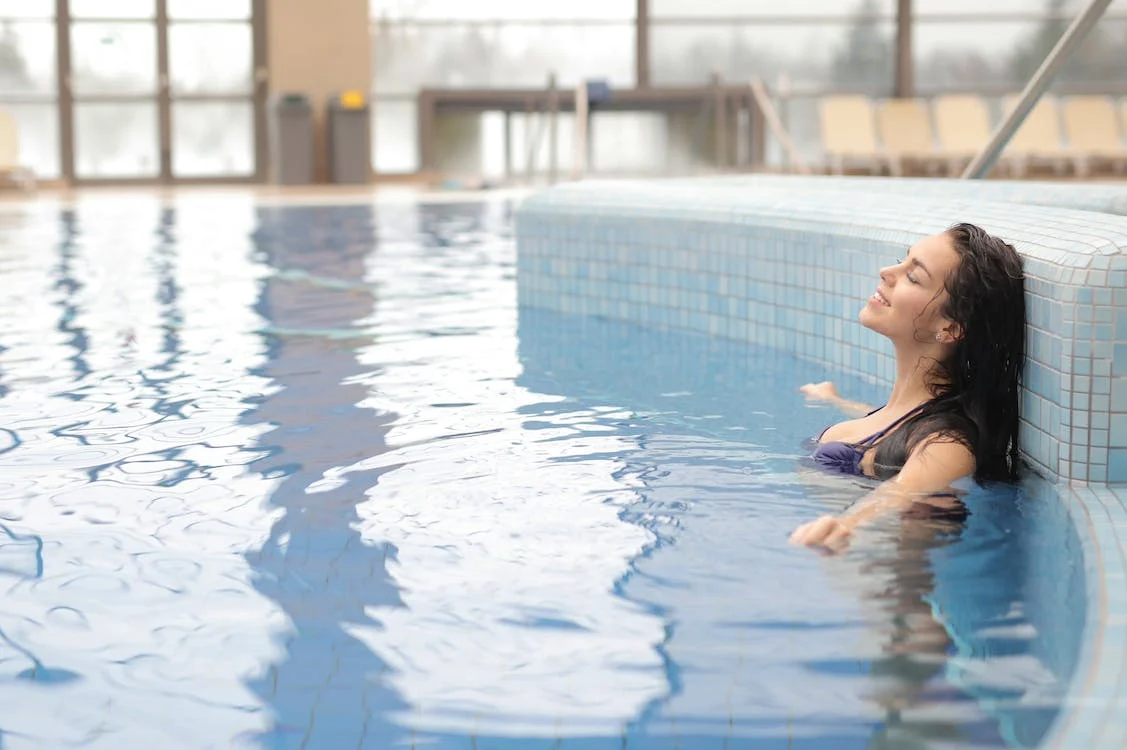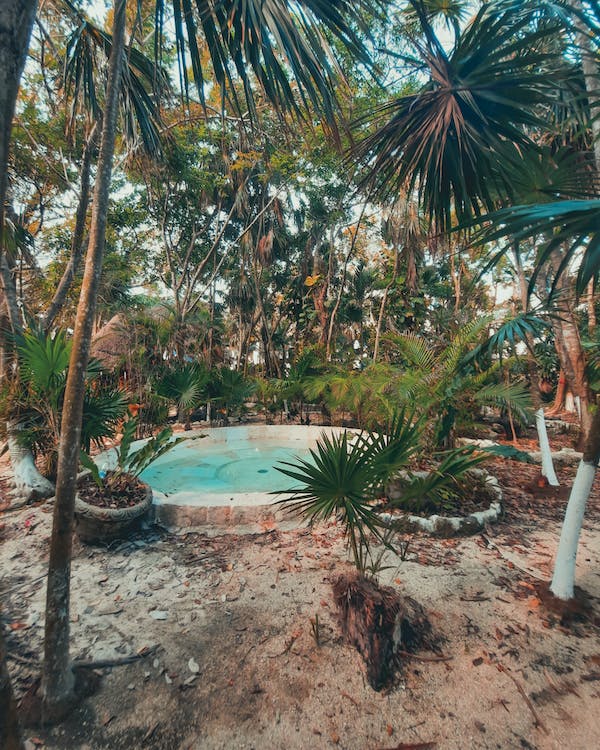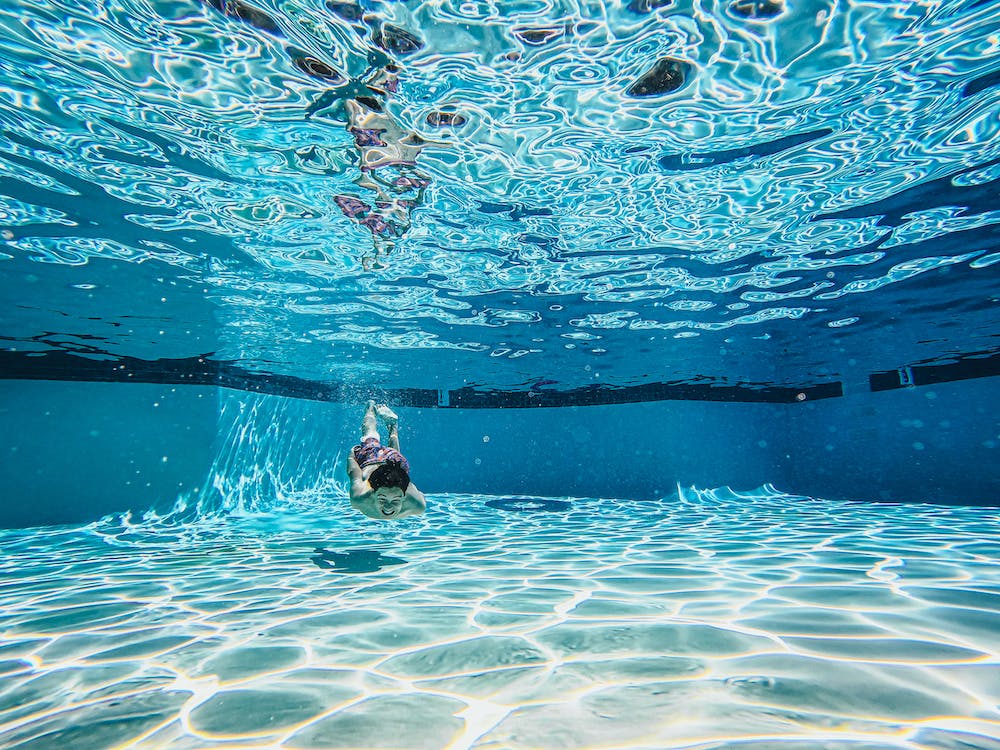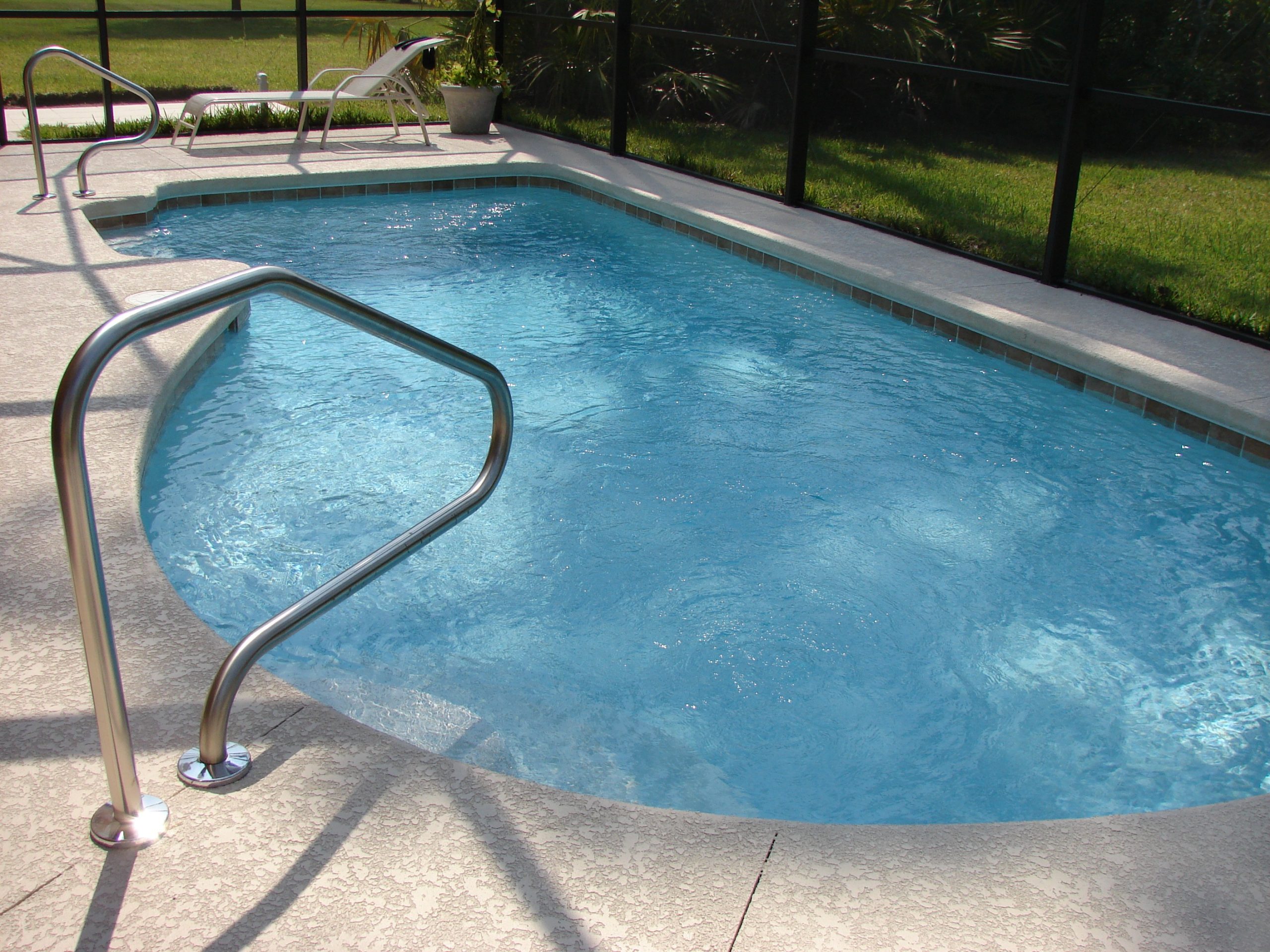4 Steps to Maintain Pool Water Quality
First and foremost, you must maintain the quality of your pool water. With a proper filtration system in perfect condition, the water should, in theory, remain clear. Nevertheless, it is essential to apply some precautions and take care of its pH.
Here is how to maintain the quality of the water of a swimming pool.
Focus on water balance
The chemical balance of water is fragile and can easily be upset. It depends essentially on 3 parameters:
– Its pH, which corresponds to its hydrogen potential.
– Its hardness (TH), which qualifies its mineralization:
◦ Its value is between 0 and 40 °F (average value 20).
◦ If its value is too high, it is advisable to soften the water by passing over resins.
◦ If its value is too low, calcium carbonate should be added.
– Its alkalimetric title (TAC), which characterizes its buffering capacity and therefore strongly influences the stability of the pH:
◦ Its ideal value is between 12 and 16 °F.
◦ Tests exist on the market for its measurement, just like hardness.
Treatment products are numerous: they have properties of regulators, clarifiers, anti-algae, or pH correctors. You will have to choose an effective product depending on the symptoms observed.
Attention: remember to check, before using a product, its compatibility with the pool lining and the type of filter of your installation.
The pH level of the water indicates its acidity or alkalinity:
– between 0 and 6, the water is acidic;
– around 7, the water is neutral;
– between 8 and 14, the water is basic.
The accepted value for swimming pools is between 7.2 and 7.8. This value optimizes the effectiveness of treatment products and guarantees the balance and quality of the water.
Several factors can cause the pH to vary:
– the dosage of the treatment products;
– the frequency of use of the pool (various basic inputs);
– the water hardness;
– the climatology;
– Pollution: pollen, sun cream, insects…
A bad adjustment of the pH causes, among other things, a change in the color of the water, eye irritation (for a pH not between 7.6 and 8), corrosion of the equipment, and the development of limestone and algae.
Regularly monitoring the pH of your pool water will allow you to correct minor deviations and adjust the chemical treatment with small volumes of product.
This will prevent you from correcting a more considerable variation later on, which would, at best, lead to high consumption of products and, at worst, to a more severe problem.
Step 1. Measure the pH of the water

A check at least once a week is recommended.
Case 1: Measure the pH with colorimetric strips
The colorimetric strips are impregnated with reagents, and their color variation is a function of the pH. This solution is the most economical, the easiest to use, and far from being the least accurate.
– Take a sample of your water in a beaker.
– Dip the strip in the water along its entire length.
– Remove it quickly.
– Compare the color of the reagents with the colorimetric scale on the bottle.
– Deduce your pH value.
Case 2: Measure the pH with reagents
In addition to measuring the pH, you can use these measuring kits to measure bromine or chlorine.
– Fill the tanks provided.
– Pour the number of drops of reagent recommended by the manufacturer.
– Shake the volumes.
– Then, deduce the pH level by comparing the color of the water in the tank with that of the graduated scale associated with your dosage.
Attention: Ensure you respect not only the instructions for use but also the expiration dates of these products, as the results are no longer guaranteed after that date.
Case 3: Measure the pH with an electronic pH meter
The electronic pH meter is battery-operated. It indicates directly by digital display the pH value of the liquid in which it is soaked.
– Turn on the device.
– Dip the tip into the water.
– Wait for the display to stabilize, then read the value.
Step 2. Readjust the pH
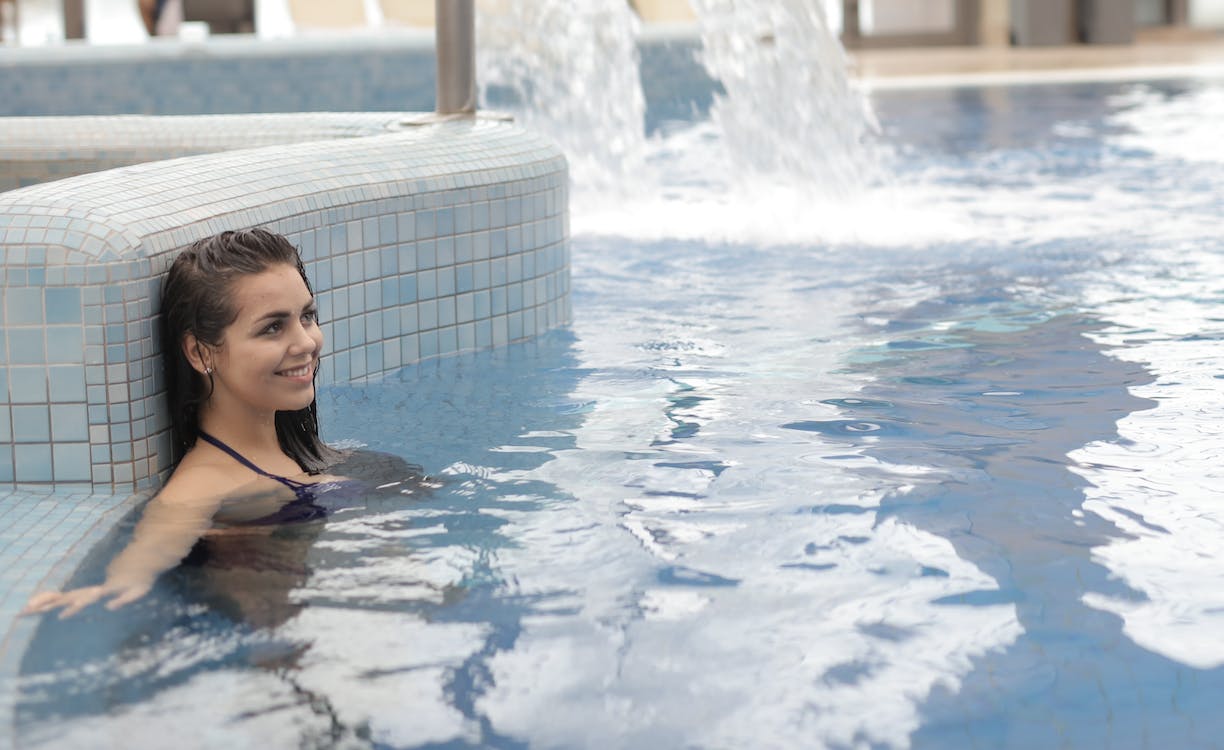
Depending on the pH of your water, you will need to readjust the pH value.
Read the instructions for the use of the treatment products carefully.
– Pour the products directly into the pond.
– Use a plastic cup as a dosing device for small volumes (its capacity is 200 mL).
For a pH below 7.2: use a product called pH+ (soda ash) to increase the pH value.
If the pH is above 7.4: use a product called pH- (sodium hydrogen sulfate) which will decrease the pH value.
In both cases, you will have to evaluate the quantity of product to add. Please note that:
– Based on the volume of your pool, you will apply the dosage announced by the manufacturer (e.g., 150 g of product for 10,000 liters of water).
– It is preferable to minimize the quantity added, even if it means adding it again the next day. Otherwise, you risk oscillating around the right value with the pH- and pH+ products…
– Repeat the test the next day to verify that the dosage was successful or to adjust it if necessary.
Warning: if the TAC value is low, your pH will never be stable (see our zoom on water balance).
pH regulator: the peace of mind solution
In more elaborate installations, a dosing pump controlled by a pH regulator delivers the volume of product necessary to maintain the balance.
Step 3. Rely on the color of the water

Of course, relying on the color of the water can never replace chemical dosing, but you can still get relevant information from it.
Greenish water or slippery walls
If your pool water is greenish or the walls are slippery, it is undoubtedly a victim of algae growth.
– Remove the algae and any suspicious traces by scrubbing the walls with a sponge brush.
– Clean the filter.
– Then, use an algaecide product to destroy the algae responsible for the color and possibly the smell!
– Leave the filter running.
– The next day, measure the pH and adjust its value (see steps 1 and 2).
Cloudy water (limescale deposits)
If the water in your pool is cloudy:
– Scrub the areas (walls and bottom) with deposits with a sponge brush.
– Vacuum the residues, and clean the filter.
– Proceed as before, this time using an anti-scale product.
– Check your pH; it may be too high.
- Read more: How to Get Rid of Pool Limescale
Brown or reddish water
If your water is brown or reddish, this color indicates the presence of iron or manganese:
– Readjust the pH (see steps 1 and 2).
– Use liquid flocculation with a clarifier which has the role of agglomerating the microscopic particles in suspension.
– Suspend the filtration for 24 hours.
Translucent green water
The translucent green color of the water indicates the presence of copper.
– Check the TAC value.
– Use liquid flocculation with a clarifier which has the role of agglomerating the microscopic particles in suspension.
– Suspend the filtration for 24 hours.
Step 4. Disinfect your pool!
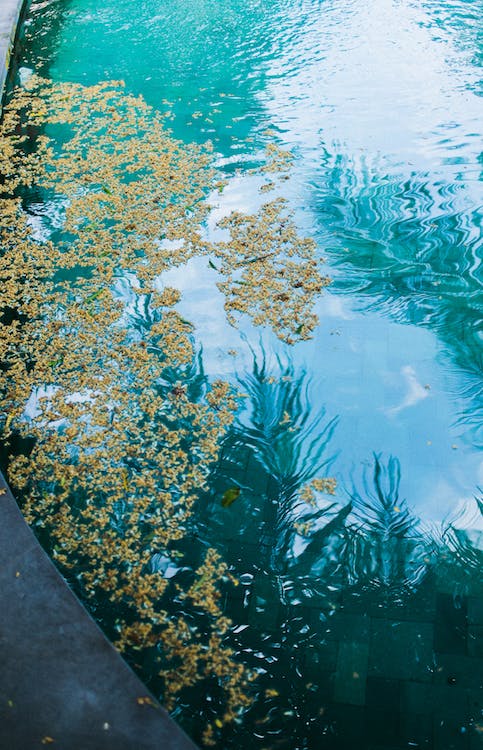
Disinfection of the pool water is mandatory: it guarantees healthy water free of bacteria.
Several treatments are available:
– Chlorine treatment: the most traditional treatment, it allows shock treatments with immediate effect.
– Bromine treatment: the treatment that has the same efficiency as chlorine but without the smell, it also allows shock treatments with immediate effect.
– Salt treatment (actually a saltwater chlorinator): the treatment that requires the least amount of monitoring.
– Active oxygen treatment: an ecological treatment that requires monitoring the water temperature and maintaining continuous filtration.
– UV treatment: an automatic treatment, but it is necessary to associate a preventive treatment.
– PHMB treatment, an effective disinfectant but not an algaecide, requires additional treatment.
Equipment to maintain the water quality of a pool
Pool vacuum cleaner
Colorimetric strips
Pool sponge brush
Clarifier
Electronic PH meter
Algaecide product
Anti-scale product
Chlorine and pH analysis kit

